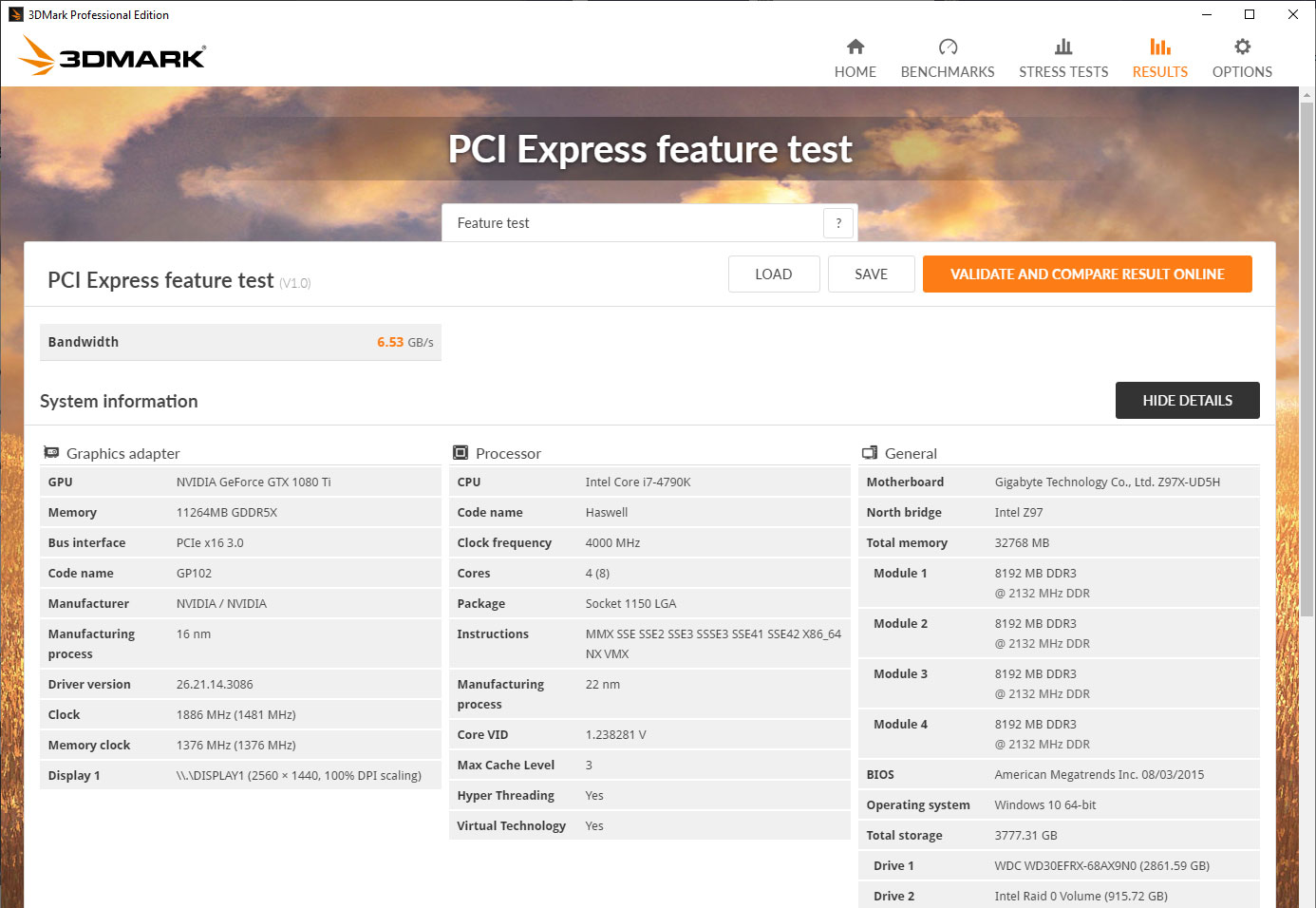3DMark now has a benchmark that will give Ryzen 3000 owners bragging rights
The new PCI Express test should score the highest on X570 motherboards.

UL Benchmarks has added a new PCI Express test to 3DMark just in time for the release of AMD's third-generation Ryzen processors and accompanying X570 motherboards. Inevitably, users who upgrade to or build a new PC around AMD's newest hardware will see the best results.
That's because the X570 chipset introduces support for PCIe 4.0. It offers twice the bandwidth as PCIe 3.0, which in turn allows for faster graphics and storage, to an extent.
Don't put a whole lot of stock in the benchmark results, though. Even UL Benchmarks admits that as it pertains to real-world performance, the PCIe bus is not much of a bottleneck for graphics and gaming.
"In real-world use with today's rendering pipelines, a PC’s gaming performance is unlikely to be limited by PCIe bandwidth. Nevertheless, the increase in bandwidth that PCIe 4.0 brings is sure to open up new possibilities with future hardware," UL Benchmark says.
The new test is designed to measure the bandwidth that is available to your GPU over the PCIe interface. Other things get in the way, so you'll never hit the theoretical maximum that PCIe 4.0 or 3.0 (or whatever you're running) offers.
Nevertheless, the test aims to make bandwidth the limiting factor for performance. The way it goes about this is by uploading a large amount of vertex and texture data to the GPU for each frame. When it's finished, it spits out an average bandwidth result.
"The 3DMark PCI Express feature test offers an accurate and reliable way to compare bandwidth across PCIe generations and measure the performance of different hardware configurations," UL Benchmark says.
The biggest gaming news, reviews and hardware deals
Keep up to date with the most important stories and the best deals, as picked by the PC Gamer team.
For reference, here's an overview of the different PCIe specs, including when they were introduced and the full-duplex bandwidth each one provides:
- PCIe 1.0 (2003): 2.5GT/s transfer rate, ~8GB/s x16 bandwidth
- PCIe 2.0 (2007): 5.0GT/s transfer rate, ~16GB/s x16 bandwidth
- PCIe 3.0 (2010): 8.0GT/s transfer rate, ~32GB/s x16 bandwidth
- PCIe 4.0 (2017): 16.0 GT/s transfer rate, ~64GB/s x16 bandwidth
- PCIe 5.0 (2019): 32.0 GT/s transfer rate, ~128GB/s x16 bandwidth
While UL Benchmarks says the test is "accurate and reliable," it does not provide any context for the results. As such, I'm not entirely sure if it's measuring full-duplex or not.

I ran the test on a setup with an Intel Z97 motherboard and got a result of 6.53GB/s. Joanna also ran the test, but on an AMD X470 motherboard, and got a result of 13.12GB/s.
That's a sizeable disparity, especially since both PCs support PCIe 3.0 x16. I also have a Sound Blaster ZxR sound card installed, but no M.2 drives. At this early stage, it's difficult to tell if something is amiss with the setup, or if either/both of our results are normal.
I've reached out to UL Benchmarks for additional info and will update this article when I hear back. In the meantime, 3DMark Advanced and Pro owners can nab the PCIe test for free. It's not available in the free version of 3DMark, unfortunately, though the Advanced version is currently on sale for $4.49 (down from $29.99).
Paul has been playing PC games and raking his knuckles on computer hardware since the Commodore 64. He does not have any tattoos, but thinks it would be cool to get one that reads LOAD"*",8,1. In his off time, he rides motorcycles and wrestles alligators (only one of those is true).


